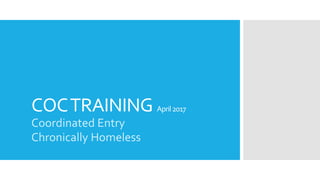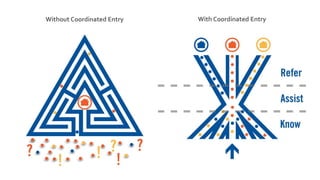This document provides an overview and agenda for a training on coordinated entry and documenting chronic homelessness. It discusses the requirements and benefits of coordinated entry for accessing homeless services. It outlines the definition of chronic homelessness and requirements for documenting an individual's disability status and homeless history to verify their chronic homeless status. This includes the order of priority for evidence, allowances for self-certification, and requirements for documenting institutional stays and breaks in homelessness. Permanent supportive housing projects that must serve chronically homeless individuals are also listed.

























